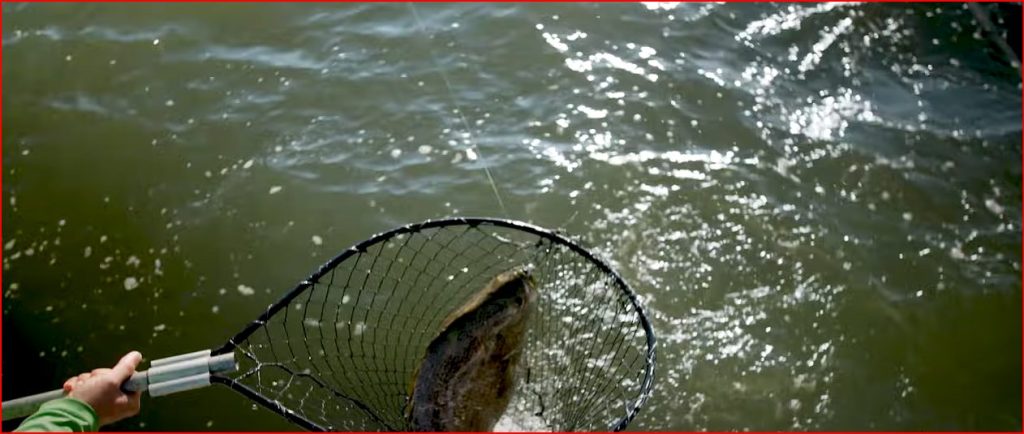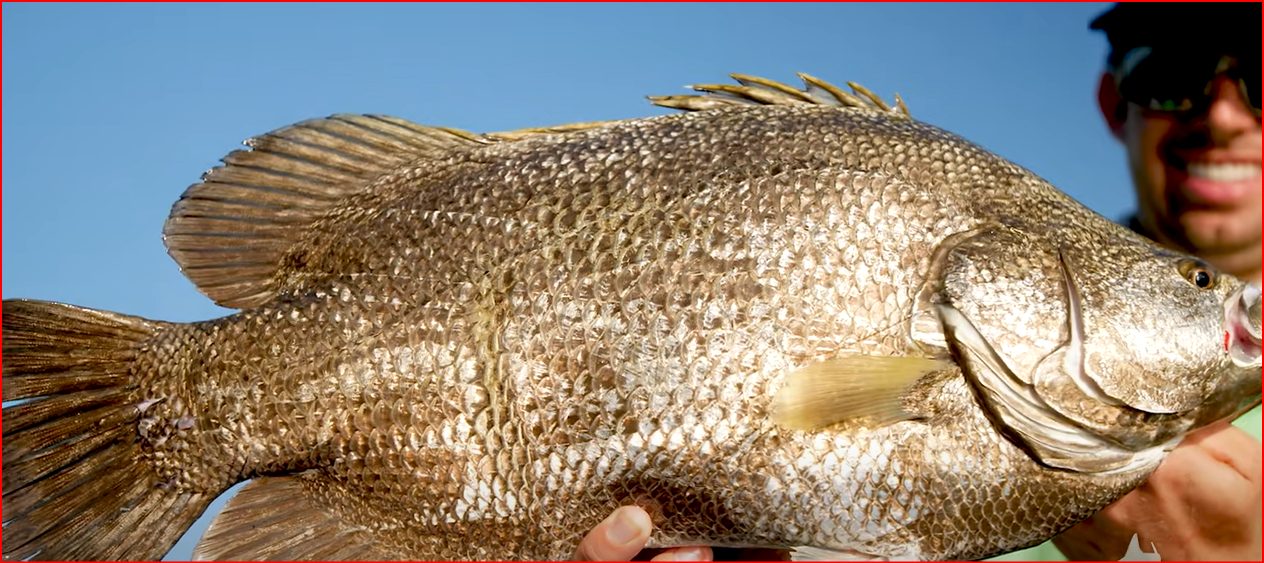Introduction
Anglers praise tripletails, a saltwater game fish, for their exceptional fighting skills and delectable flavour. Tripletail, commonly referred to as “blackfish,” can be found in the coastal waters of the Caribbean, South America, the Atlantic and Gulf coastlines of the United States.
Fishing for tripletails is important.
Fishing for tripletails is significant for both commercial and leisure anglers. Sport anglers like the challenge of getting these elusive fish, making tripletail a popular target. Due to their high market value, tripletail are an important source of income for commercial fishermen.
What the Blog Post Is For
This blog post aims to offer both inexperienced and seasoned fishermen with useful advice and details on how to catch tripletail. The habitat and range of the tripletail, the gear required for tripletail fishing, the methods for catching tripletail, how to clean and prepare tripletail, and success suggestions will all be covered. This guide will give you the information and resources necessary to catch tripletail and prepare a delectable feast, whether you are an experienced angler or just getting started. Let’s get started and see how to catch tripletail!
II. Tripletail Habitat and Range
A. Location of Tripletail

From the Gulf of Mexico to the Carolinas, as well as in the Caribbean and South America, tripletail are found in coastal waters. They frequently hang around floating structures like buoys, weed lines, and garbage that serve as refuge and draw prey. Tripletail can be found in deeper areas close to reefs and wrecks, although they favour warm, shallow conditions with a muddy or sandy substrate.
A. Seasonal Transition
As a migratory species, tripletails have seasonal variations in their migration habits. Tripletail fish migrate to shallow areas in the summer to spawn and feed. They start to travel to deeper waters in pursuit of higher temperatures as the water cools in the fall. Tripletail can be seen in deeper areas close to reefs and wrecks in the winter.
D. The Ideal Season to Catch Tripletail
Tripletail’s spawning season, which normally lasts from May to September, is when they are most abundant. Tripletail are more active at this time and can be found in shallow areas close to floating objects. Moreover, tripletail are more active throughout the early morning and late afternoon, making these periods the optimum for catching them. But, as tripletail are catchable all year long, it’s a good idea to try your luck at catching one at any time.
3. Fishing gear for tripletails
Rods and reels, first
You’ll need a strong rod and reel to handle the tripletail’s battling prowess when it comes to capturing them. It is advised to use a spinning or conventional rod with a quick action that is medium-heavy to heavy. The reel should have a big line capacity and a powerful drag system to prevent the fish from breaking your line. For tripletail fishing, a reel size between 3,000 and 5,000 is ideal.
B. Leader and Line
The conditions you’re fishing in will determine the line and leader you use for tripletail fishing. An excellent balance of strength and sensitivity can be found in braided lines in the 20–30 lb test range. It is also advised to use a fluorocarbon leader in the 20–30 lb test range because it is less obvious under water and can lessen the likelihood that the fish will snap your line.
C. Lures and Bait
There are numerous baits and lures that work well for catching tripletail. Artificial lures like jigs, soft plastics, and topwater plugs can be successful in addition to live bait like shrimp, crabs, and small fish. Although tripletail are frequently located near the surface, it is crucial to maintain live bait there when utilising it. It’s critical to use lures whose size and colour correspond to the baitfish that tripletail eat on.
Sight casting is a common method for capturing tripletail. To do this, cast a light jig or soft plastic lure in front of a tripletail that can be seen near the surface. Using live bait or lures to attract the fish to strike while drifting or trolling close to floating items like buoys and trash is another successful strategy. In general, it’s crucial to test out several baits and lures to determine which ones perform best in the particular fishing circumstances.
IV. Tripletail Fishing Methods
Sight Casting as A

The method of choice for capturing tripletail is sight casting. To do this, cast a light jig or soft plastic lure in front of a tripletail that can be seen near the surface. Being precise and patient with your castings is essential for success while sight casting. Cast the bait directly in front of any tripletails you see and recover it carefully. As tripletail are finicky fish, it’s crucial to make the lure appear as organic as possible. If the fish rejects the bait, change your strategy and look for other fish.
A. Dizziness and circling
Drifting or trolling close to floating items like buoys and garbage is another efficient method for catching tripletail. Live bait or lures can be used with this technique. Position your boat upwind of the floating object while you are drifting, and allow the wind and current to carry you there. Keep an eye out for tripletail near the surface as you drift, and cast your bait or lure in their direction. While trolling, retrieve your bait or lure slowly and steadily to replicate the action of a baitfish.
The use of live bait.
Targeting tripletail with live bait has the potential to be very successful. Crabs, tiny fish, and shrimp are all delectable choices. Although tripletail are frequently located near the surface, it is crucial to maintain live bait there when utilising it. To maintain the bait close to the surface, one method is to use a float or popping cork. This not only aids in fish attraction but also facilitates the detection of a fish taking the bait. It’s crucial to exercise patience when using live bait and to wait until the fish has fully consumed it before setting the hook.
In general, it’s crucial to try out several approaches to determine which ones are most effective for the particular fishing circumstances. Targeting tripletail requires patience and persistence because they can be picky. You can catch a scrumptious tripletail for your next meal with the appropriate gear and a little luck.
V. Cleaning and Preparing Tripletail
A. Tripletail cleaning

Tripletail cleaning is a rather easy technique. Make an incision behind the gills, along the belly, and towards the tail of the fish while it is on its side. After removing the fish’s internal organs, thoroughly rinse it in fresh water. The skin and any leftover bones should next be cut away with a fillet knife. The fillets should be given a second clean water rinse before being dried with paper towels. Now that the fillets are prepared, cook them.
B. Tripletail preparation
The tripletail is a flexible fish that may be prepared in several ways. Popular cooking techniques include grilling, broiling, and pan frying. Avoid overcooking tripletail when preparing it because this might cause the fish to become rubbery and dry. For each inch of thickness, aim for a cooking time of 8 to 10 minutes.
The tripletail is frequently grilled while being marinated. Olive oil, lemon juice, garlic, and herbs like thyme and rosemary should all be combined. The fillets should be marinated for at least 30 minutes before grilling for 3 to 4 minutes on each side over medium-high heat.
Tripletail can also be pan-fried with a crispy coating for an additional delectable preparation. In a small bowl, combine the flour, salt, and pepper. The fillets are coated in the flour mixture after being dipped in beaten egg. The fillets should be cooked for 3–4 minutes on each side, or until golden brown, in a skillet that has been heated with oil over medium-high heat.
C. Tripletail recipes
To help you started, consider these recipe suggestions:
Tripletail grilled with a herb marinade
Tripletail with a Pan-Fried Lemon Butter Sauce
Cakes of triplets with remoulade sauce
Mango salsa-topped tacos with blackened tripletail
In general, tripletail is a tasty and adaptable fish that may be served in a variety of ways. You’re sure to find a recipe you like with a little experience and trial.
Six. Tripletail Fishing Advice
Weather conditions, first

Tripletail fishing can be significantly impacted by the weather. Since wind and current can affect where these objects are placed, tripletail are frequently seen next to floating objects like buoys and garbage. On calm days, these objects could be more dispersed, making tripletail harder to find. But, on windy days, these items could group together, making it simpler to locate fish. Moreover, tripletail are more likely to be located near the surface on gloomy days, making them preferable for fishing.
A. Using artificial lures when fishing
Using artificial lures when fishing can help you catch tripletail. Popular choices include soft plastic lures and jigs. Jigs should be fished slowly and steadily, pausing occasionally to let the lure sink. To prevent becoming tangled in underwater objects, soft plastic lures can be rigged weedlessly. The choice of colour might be significant as well; lighter colours work best in clear water while darker colours work best in muddy water.
C. Placing the boat
Targeting tripletail can also require careful boat positioning. Position the boat upwind of the object and allow the wind and current to carry you towards it while fishing close to floating things. By doing so, you’ll be able to cover more ground and improve your chances of catching fish. Moreover, pay attention to the shadow your boat casts because this can scare fish. Place the boat such that the shadow is cast away from the fishing area.
All things considered, catching tripletail can be difficult yet rewarding. You may improve your chances of capturing a succulent tripletail for your next supper by keeping an eye on the weather, using the right lures, and setting your boat correctly.
7. Concluding
A. Important Points Recap

We’ve covered a number of crucial topics for catching tripletail in this blog post. First, we were familiar with the habitat, range, ideal gear, and methods for catching tripletail. In addition, we discussed several culinary ideas as well as how to clean and prepare tripletail. We concluded by offering some advice on how to catch tripletail fish, emphasising the significance of the weather, the use of artificial lures, and good boat location.
B. Closing Remarks
Anglers of various skill levels can enjoy the challenging and thrilling experience of tripletail fishing. It necessitates perseverance, meticulousness, and an openness to experimenting with novel approaches and methods. You’ll be on the right track to capturing your own mouthwatering tripletail if you pay attention to the suggestions and guidance offered in this piece.
C. Inspiring Tripletail Fishing Trials
On your subsequent fishing trip, we strongly advise you to try tripletail fishing. Tripletail are a cherished catch for many fishermen due to their mouthwatering meat and difficult behaviour. To help safeguard this species for future generations, always abide by local fishing laws and best practises for catch and release. Best of luck and have fun fishing!

